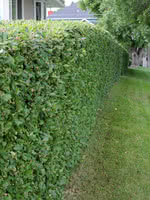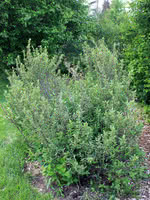Mon-Fri 9am - 5pm Mountain time
Peking Cotoneaster vs Canadian Buffaloberry
Cotoneaster acutifolia
Shepherdia canadensis
NOT AVAILABLE THIS SEASON - MIGHT RETURN
Peking Cotoneaster is a medium-sized shrub that is well adapted to colder climates. Best suited for use as a hedge, Peking Cotoneaster has dark green foliage that turns a stunning reddish orange in the fall.
Hardy fruit guru, Bernie Nikolai (DBG Fruit Growers), has started to recommend grafting hardy pear varieties to Peking Cotoneaster after his experiences were successful and produced fruit faster than other rootstocks. Remember to leave some nurse limbs if you try this.
Canadian Buffalo Berry is a native deciduous shrub found throughout North America. This hardy, medium-sized shrub will tolerate poor soil conditions and produces attractive, edible–though very bitter–red fruit.
Peking Cotoneaster Quick Facts
Canadian Buffaloberry Quick Facts
In row spacing: 0.3 m (1.0 ft)

